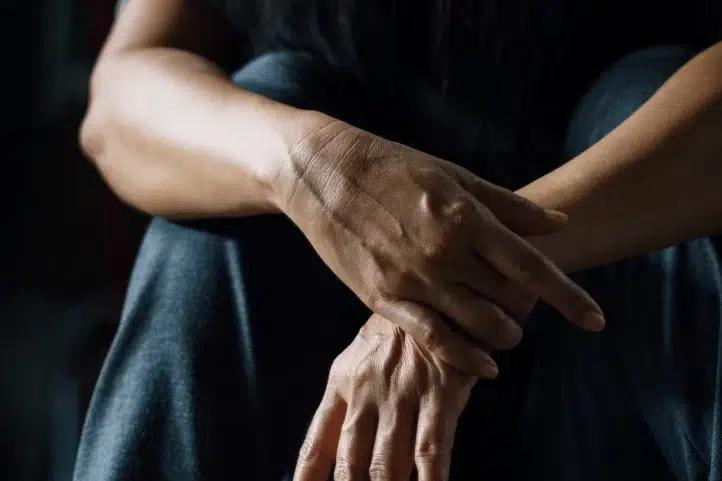Mental Health Checklist for Traumatic Accident Survivors
Every treated broken bone from a traumatic accident is accompanied by an untreated mental wound—the true concern. Mental health is often overlooked in the aftermath of accidents, but addressing it is essential for holistic recovery.
Trauma can manifest differently in individuals, including unique emotional, physical, and cognitive symptoms.
Why Mental Health Care is Just as Important as Physical Recovery
Untreated mental health issues, like depression or PTSD, can complicate physical healing and recovery. For instance, individuals with traumatic brain injury may experience emotional instability, depression, and anxiety, which can impede recovery.
Mental health issues can cause fatigue, difficulty concentrating, and decreased motivation, making it harder to follow physical therapy and recovery plans. It is essential to seek early intervention and support for your mental health after a severe injury.
Mental Health Checklist for Traumatic Accident Survivors

Immediate Emotional Reactions
The initial symptoms you experience from an accident may include shock, disbelief, and intense, overwhelming emotion. Having these feelings is a normal response to trauma, such as motor vehicle accidents. It is crucial, however, to know how to recognize them. Catching these emotional reactions early is essential in ensuring that they do not escalate into chronic mental health conditions.
Identifying Signs of Anxiety or Panic
Anxiety and panic attacks can come with various symptoms, including a racing heart, shortness of breath, and persistent worry. For example, in the aftermath of a severe car accident, an individual may experience anxiety symptoms when near vehicles, while driving, or even thinking about the incident.
Survivors of serious auto crashes may develop a fear of driving or being in a car, which can make getting back to everyday life difficult. This anxiety can extend to being a passenger or even being around vehicles in general.
Some coping techniques a survivor can utilize when feeling the symptoms of anxiety or panic include deep breathing and grounding exercises. Techniques such as focusing on physical sensations or counting objects around them can help individuals stay calm.


Managing Symptoms of Depression
Depression can take many forms; however, some of the most common symptoms include persistent sadness, lack of motivation, withdrawal from social activities, changes in sleep or appetite, and constant thoughts of hopelessness.
There are ways to deal with depressive symptoms, such as seeking professional help through treatments like cognitive behavioral therapy or starting small self-care routines, such as:
- Taking short walks
- Following a healthy diet
- Maintaining a regular sleep schedule
- Journaling
- Staying connected with friends
Coping With Post-Traumatic Stress Disorder
Post-traumatic stress disorder, or PTSD, is characterized by flashbacks, nightmares, and avoidance. In terms of a car accident, survivors might experience a trauma response each time they hear a crash-like sound or when driving through the scene of an accident. The feeling of danger or being on alert can persist long after physical injuries have healed.
There are PTSD therapies available to survivors of traumatic accidents. One such type of treatment is eye movement desensitization and reprocessing, or EMDR. This therapy can effectively support trauma survivors in working through their past and the triggers that cause PTSD symptoms.


How To Build a Support System
It is crucial to reach out to loved ones, join a support group, or speak with a counselor amid mental health challenges. There is no right or wrong way to feel after a traumatic experience; everyone processes their trauma differently. Expressing emotions or sharing the experience can help alleviate the mental burden of the accident.
Survivors can communicate their needs in different ways, including asking for help with everyday tasks, seeking emotional comfort, or finding someone to talk to about the mental impact of the accident. You should never feel ashamed or embarrassed about your trauma. You deserve to be happy and at peace like anyone else, and if trauma is preventing you from that, then resources are available to aid in healing.
Developing Healthy Routines
Regular routines can help individuals regain a sense of control and normalcy. There are numerous activities you can take part in to help with this, such as:
- Exercise: Low-impact exercise like walking, swimming, or yoga can help improve both physical and mental well-being.
- Meditation: Survivors can benefit from mindfulness and relaxation techniques, including meditation, breathing exercises, or gentle stretching.
- Creative outlets: Art, journaling, and other forms of creative expression can serve as an outlet for processing emotions related to the accident.

When To Seek Professional Help
Taking the First Step Toward Healing
Healing from a traumatic accident—whether a car crash, dog attack, or another serious event—takes time, care, and support. Addressing your mental health is just as important as treating your physical injuries. By recognizing emotional symptoms early and using the strategies outlined in this checklist, you can begin building a path toward emotional resilience and long-term recovery.
Remember, asking for help is a sign of strength—not weakness. You are not alone, and you don’t have to navigate this journey by yourself.
